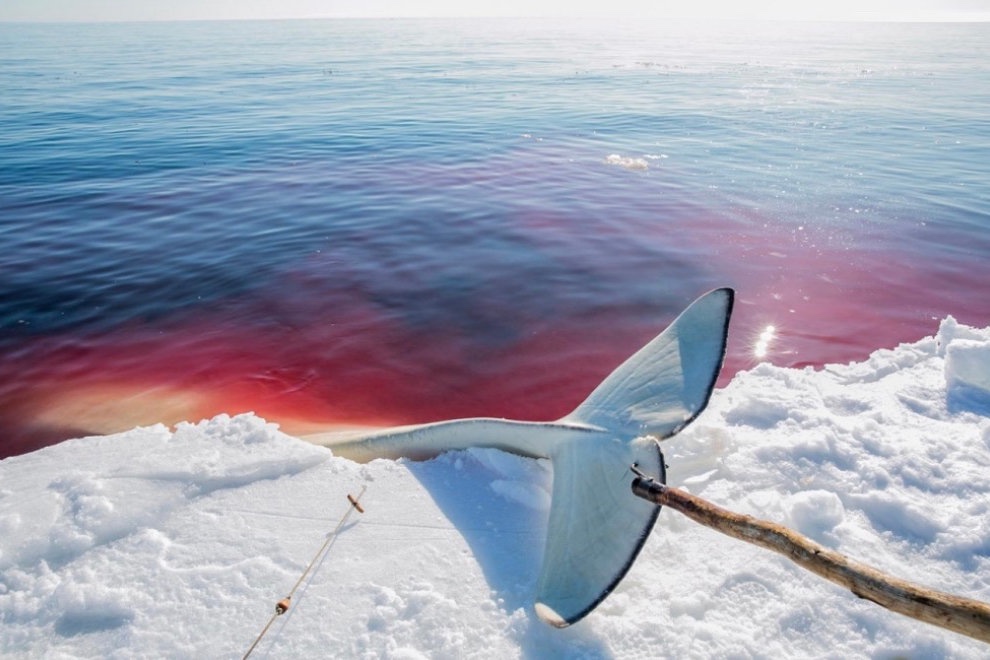When natural conception fails, or two desired animals situated at different facilities are selected for a breeding programme, artificial insemination replaces natural breeding efforts. This procedure involves training a male to present his penis to be manually stimulated until ejaculation. The ejaculate is then collected, frozen, and stored for future use. As if this wasn’t degrading enough, some facilities (such as Mundo Marino in San Clemente del Tuyú, Argentina) train their males to become aroused by other species in preparation for AI.
In 2008, trainers at Mundo Marino initiated a behavioural programme to assess reproductive characteristics (such as fertility) with the intent of collecting semen from Kshamenk, their bull orca, during conditioning sessions. These sessions involved using Floppy to promote sexual arousal in Kshamenk; every time he became sexually aroused by Floppy they were both positively reinforced. This resulted in an increase in the frequency of erections which was trained to be prompted with a discriminative stimulus. After Kshamnek had been trained to present his erect penis, a series of desensitization sessions of his genital region eventually led to the use of an artificial vagina which allowed for semen samples to be successfully and consistently obtained by 2010 – around 24 samples were collected in total. It is known that SeaWorld trainers travelled to Mundo Marino in 2010 to train Kshamenk for artificial insemination and collect his semen, therefore, they were involved with the process to some degree – potentially advising over the whole process.

Photo sourced Orca Pod Wikia.
Once a male orca has been trained for AI, samples are frequently collected and often transferred to various facilities around the world. Within a 12-year-period, 173 semen samples were collected from five killer whales. Here’s a breakdown of the samples collected per male:
Tilikum – 63 samples within a 10-year-period (1998-2008)
Ulises – 72 samples within an 8-year-period (2002-2010)
Keet – 6 samples within a 1-year-period (2010)
Oscar – 8 samples within a 1-year-period (2009)
Kshamenk – 24 samples within a 1-year-period (2010)
Sperm samples can also be collected from deceased captive or wild animals using a process known as gamete rescue. SeaWorld admitted to collecting samples from 4 dead Cook Inlet belugas “in conjunction with native subsistence hunts”. This subpopulation of beluga was “classified as critically endangered in response to multifactorial impacts of habitat change and subsistence hunting”, as SeaWorld admits, yet they worked with the very hunters who push this population towards extinction for the sake of their beluga breeding programme.

Photo credit to Nathaniel Wilder.
For females, the procedure involves hormone therapy, monitoring of the estrus cycle (which can be controlled via oral synthetic progestagen treatment), and the insertion of an endoscope, catheter, and semen directly into the uterus. Females voluntarily take part in this process or, according to SeaWorld, are forcefully “removed from the water under mild or no sedation and placed on foam pads during the procedure’s 20 to 30 min duration, while they are kept cool and clinically monitored.” Artificial insemination is particularly uncomfortable for females, as demonstrated by Orkid, a female killer whale situated at SeaWorld San Diego, who knocked a female trainer off a wall during preparation for an AI procedure.